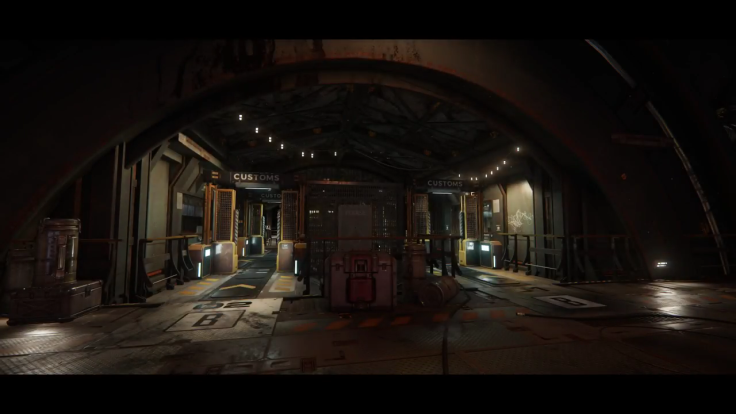Star Citizen developments continue, as the Cloud Imperium Games’ teams have dropped yet another episode of Around The Verse . This week we got updates on Squadron 42, a new Nox bike and a quick look at the tools used to build the 100-ish solar systems planned for this universe.
First, the episode focused on Star Citizen’s single-player module, Squadron 42. To those ends, some parts of the experience are nearing final polish stages, while other aspects appear pretty basic. On the more complete side, director Brian Chambers of Foundry 42 confirms level designers have essentially finished their first round of surface outposts. Now the emphasis is on filling those areas with player interactions, as well as designing the Stanton System’s flagship landing zones in four key locations.

As seen in these screenshots, the lighting team has also been in a pretty advanced state of development. All surface outposts have reportedly neared their final lighting configurations and are being sectioned off for presets to be used later.

While some of Squadron 42’s environments are looking great, it seems there’s still lots of work to do when it comes to filling them with activity. For example, the game’s art team is still working on basic animations for cutscenes, programmers are working on creating doors and weapon animations are in a very elementary state. There’s also a brand new holographic technology in play that will likely take some time to get used to.
In short, the team described this process as the end of the “overall research phase.” In terms of when backers will get their hands on some of this content, Chambers would only commit to an update in the “near future.”
As for ships, the star of the show was the armored Nox bike made with Xi'An technology. It’s designed for racing and combat, and it’s meant to compete with the existing Dragonfly. Vehicle artist Chris Smith goes into excruciating detail about the creation of the bike, but all you truly need to see is the design above. It’s meant to look simple from the front, with more intricate style as the player approaches. It’s on sale now for $35.
The headliner of this episode was CIG’s new solar system creation technology called SolEd. Made in Germany, the tool is designed to more easily create the hierarchy of suns, planets and moons that bring that will bring Star Citizen’s universe together. In other words, it takes the astronomic research of the developer’s consulting partners and puts it into action instantly. For example, how might planets be rotated or positioned in certain circumstances? How might those factors impact the position of asteroids? SolEd takes all of that into account.
Despite that realism, however, there are concessions the development team must make for the sake of player usability. As of now, everything in the Star Citizen universe is being designed to one-tenth of its actual scale. In certain tests, it took 20 minutes to reach destinations at quantum travel speeds. The scaling is meant to alleviate that downtime.
That being said, players shouldn’t be too concerned about this decision impacting Star Citizen’s scope and variety. Certain moons still take 15 hours to drive across. In terms of environments, archivist Cherie Heiberg mentioned diamond planets, planets that rain glass and stellar clouds that taste like raspberry schnapps. All of that uniqueness is expected to translate to the final game.
One thing that remains to be seen, however, is just how well this SolEd tech will actually help CIG realize its full vision for Star Citizen. It has taken the team years just to reach this point of completion with the Stanton System. The current goal is to use those assets to create at least a hundred more.
Star Citizen is available now for backers on PC. Check out our summary of last week’s ATV right here .
What are your thoughts on this latest Around The Verse? Are you going to buy the Nox? Can CIG really create that many solar systems? Tell us in the comments section!


















